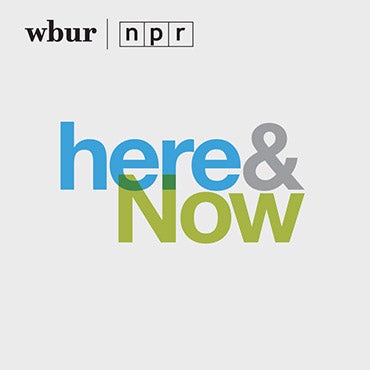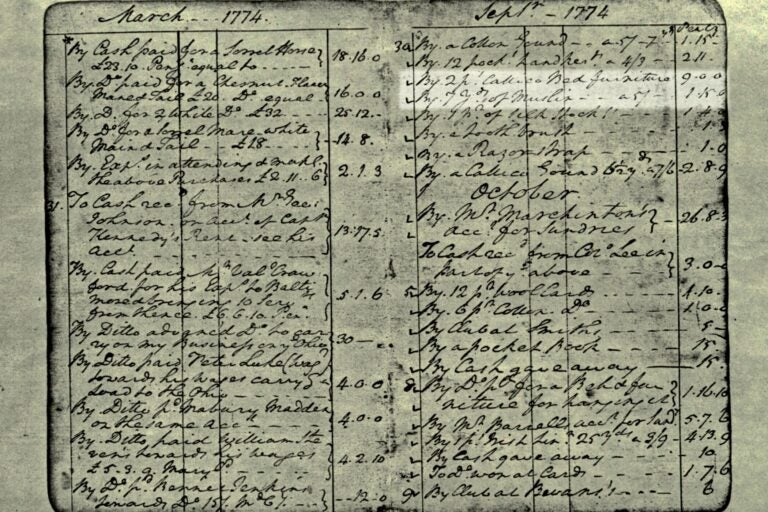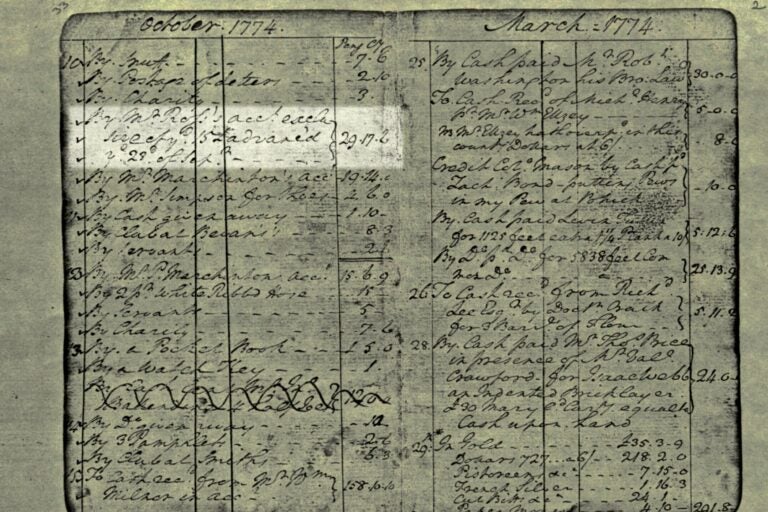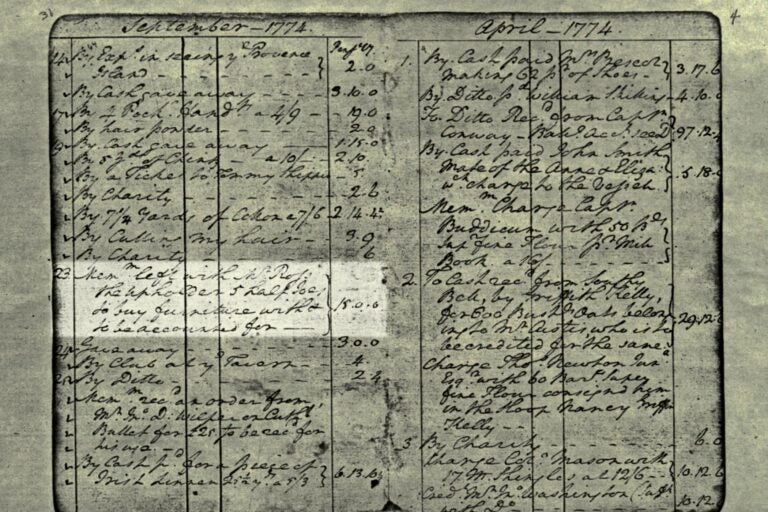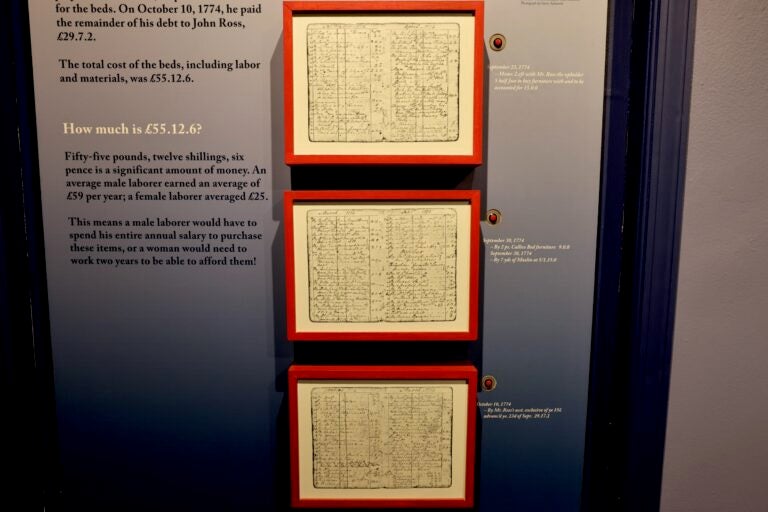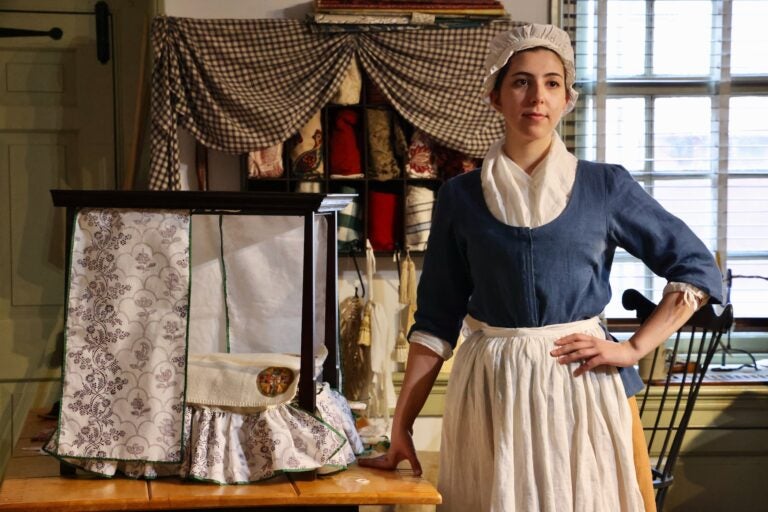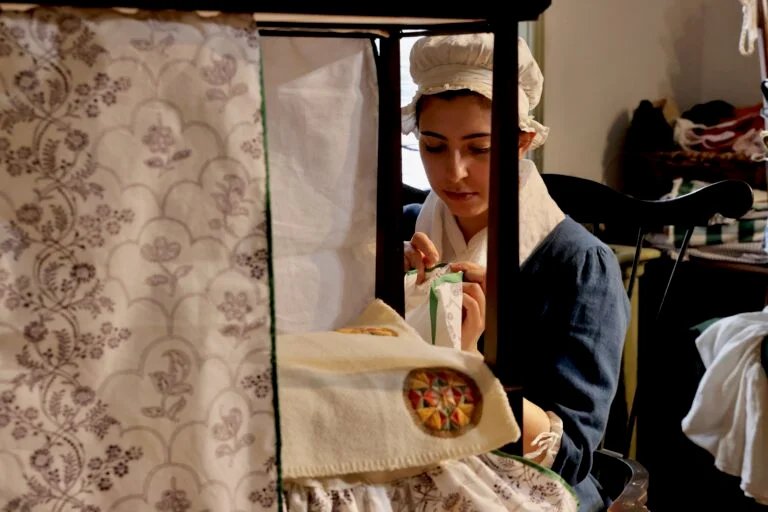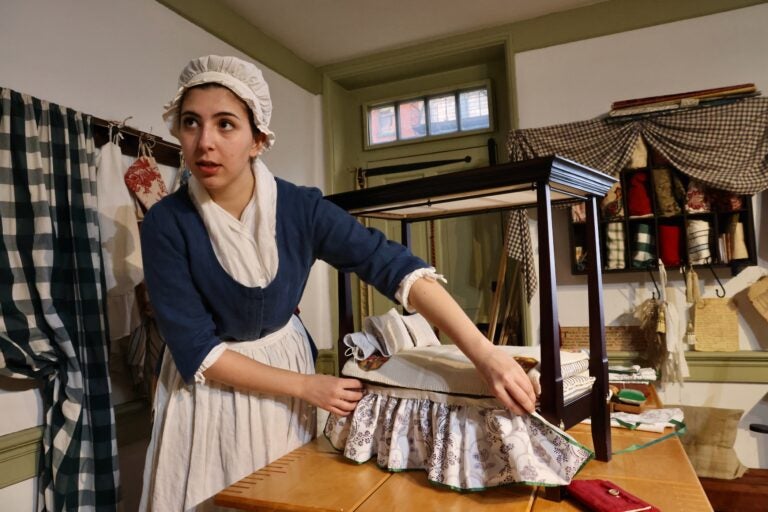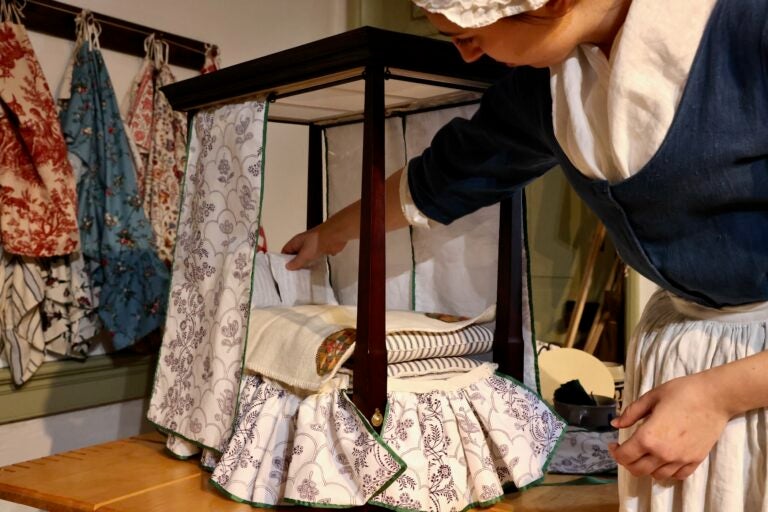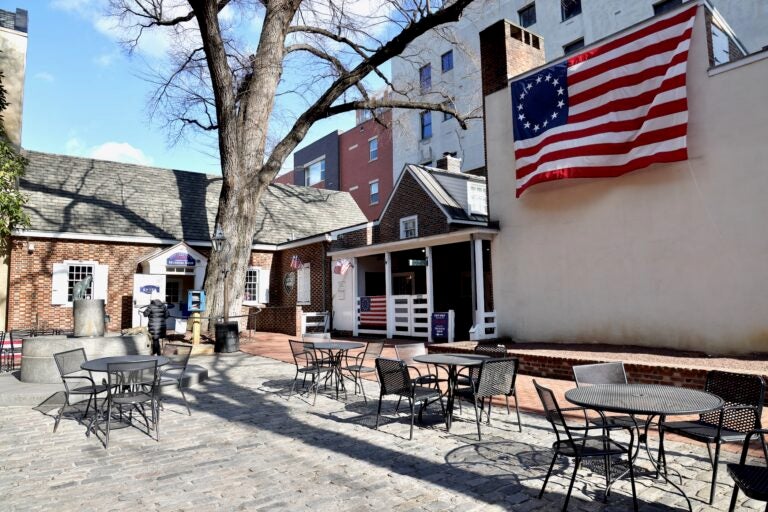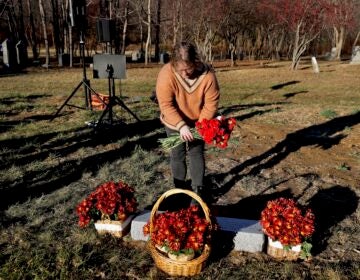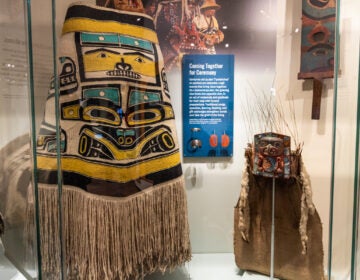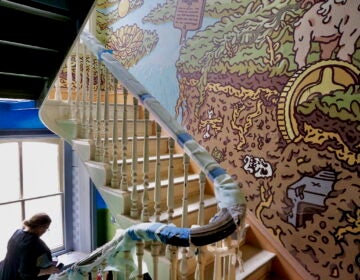A small stitch for womankind: Philly’s Betsy Ross House is sewing up her place in history
A bedding project for Mount Vernon is based on documents that tie George Washington to Betsy Ross.
From Philly and the Pa. suburbs to South Jersey and Delaware, what would you like WHYY News to cover? Let us know!
At the Betsy Ross House in Philadelphia, actors portraying Ross are busily sewing bedclothes for a doll-sized version of George Washington’s canopy bed.
They are bringing to life evidence that suggests Ross may have, indeed, sewn the first Stars and Stripes national flag.
Historians have backed away from the claim that Ross sewed the first American flag in 1776 at her upholstery shop on Arch Street, for lack of concrete documentation. The story was put forth in the 19th century by her descendants with little supporting evidence.
But recently discovered documents show Ross had previous business dealings with George Washington, setting up their future relationship. In 1774, she outfitted one of his bedrooms at Mount Vernon with bedding and curtains.
“This finding was really exciting for us because some of the people who are doubtful about whether or not Betsy Ross stitched the first American flag, one of the things they cite is: Why would George Washington go to Betsy Ross of all people?’” said Lisa Acker Moulder, director of the Betsy Ross House.
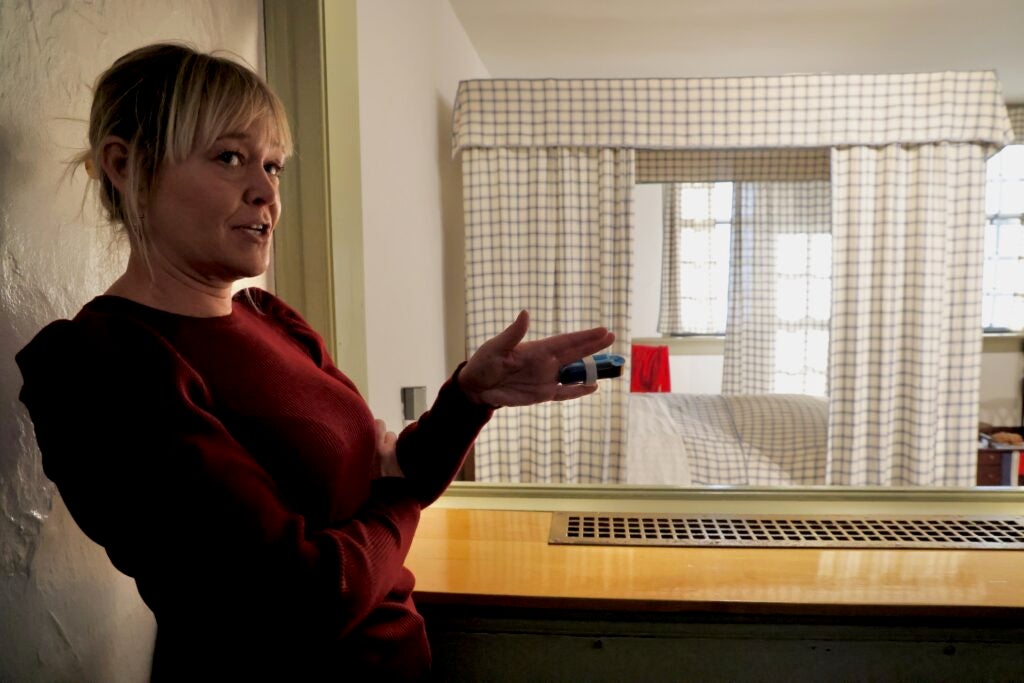
“Now we have some evidence that she’d done work for him in the past,” she said. “And it was a big job.”
In 2014, researchers from Mount Vernon found an accounting ledger at The Huntington Library in Los Angeles showing that while Washington was in Philadelphia for the First Continental Congress in 1774, he hired Betsy and her husband John Ross to outfit what is now called the Chintz Room, named after the brightly printed fabric that was popular at the time.
The canopy bed drapes and skirts are made of cotton chintz fabric printed with an ornate purple floral pattern, edged in green. The mattress and pillows are striped ticking fabric stuffed with goose feathers and horse hair, covered with plain white linen sheets and pillowcases.
To the best of her knowledge, Audience Engagement Manager Desta Pulley said this is what the Washington’s ordered.
“We can ever know for 100% certain, but the Washington’s were very wealthy and they liked having nice things in their house,” Pulley said. “It would have been a luxurious bed set and the design would be approximately this one.”
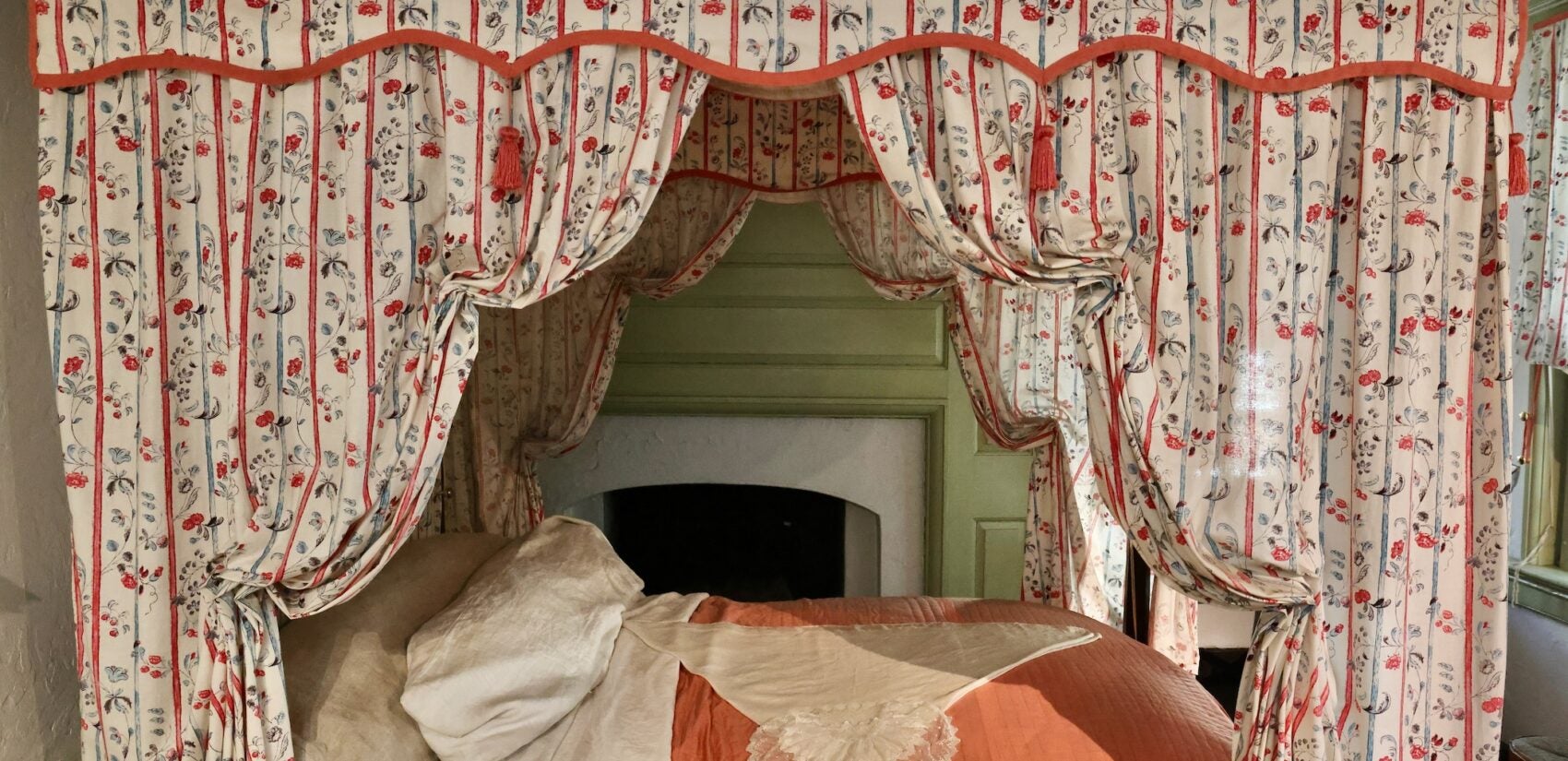
Although made of chintz, it wasn’t chintzy. Washington paid a little more than 55 pounds to Ross’ to dress a single room, the equivalent of about $9,000 today.
Washington was not afraid to spread money around. A few years later, in 1787, after a long, grueling summer spent drafting the Constitution, Washington threw a farewell party at City Tavern with a bar tab that today would be $15,000.
After the discovery of the Ross ledger, Mount Vernon recreated the drapery and bedclothes according to its details. This was a decade ago, when the Betsy Ross House was only just starting to get its own upholstery business off the ground. The house makes historically accurate, Colonial-era textiles made entirely by hand with 18th century tools and techniques. It has been commissioned by museums and historic sites such as the Bishop White House in Old City and the Woodford Mansion in Fairmount Park, and the occasional private client.
The house also made bedding and curtains for itself, outfitting Betsy Ross’ bedroom in a simple checked fabric, a style she was known to give herself. The bedroom dressings won an historic award in 2015.
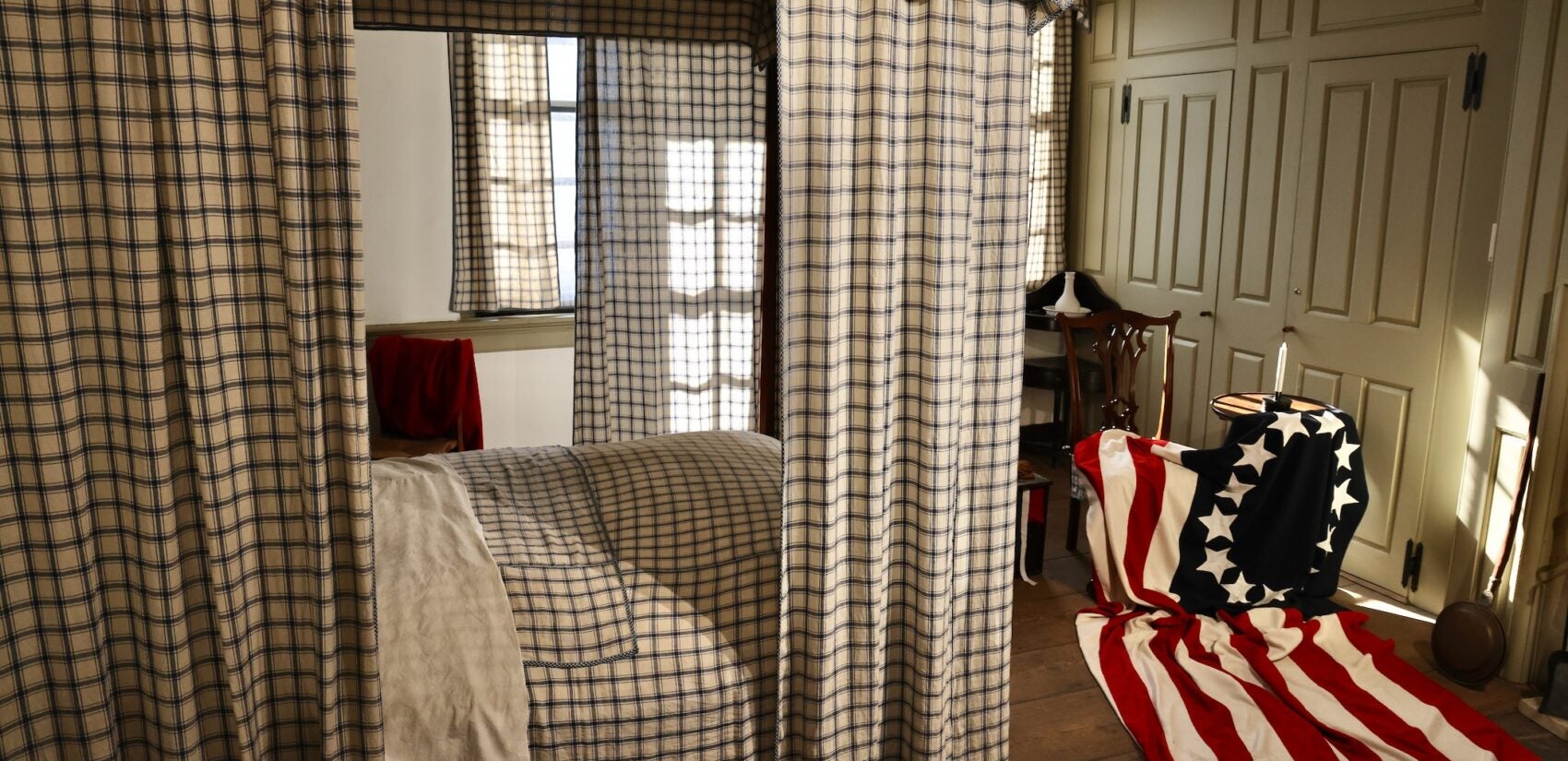
With a few years of upholstery experience under its belt, Acker-Moulder suggested Mount Vernon partner with the Betsy Ross House on a project to recreate Ross’ historic drapery in Ross’ historic shop.
But in miniature, dressing a scale model of Washington’s canopy bed that could be manipulated for education purposes.
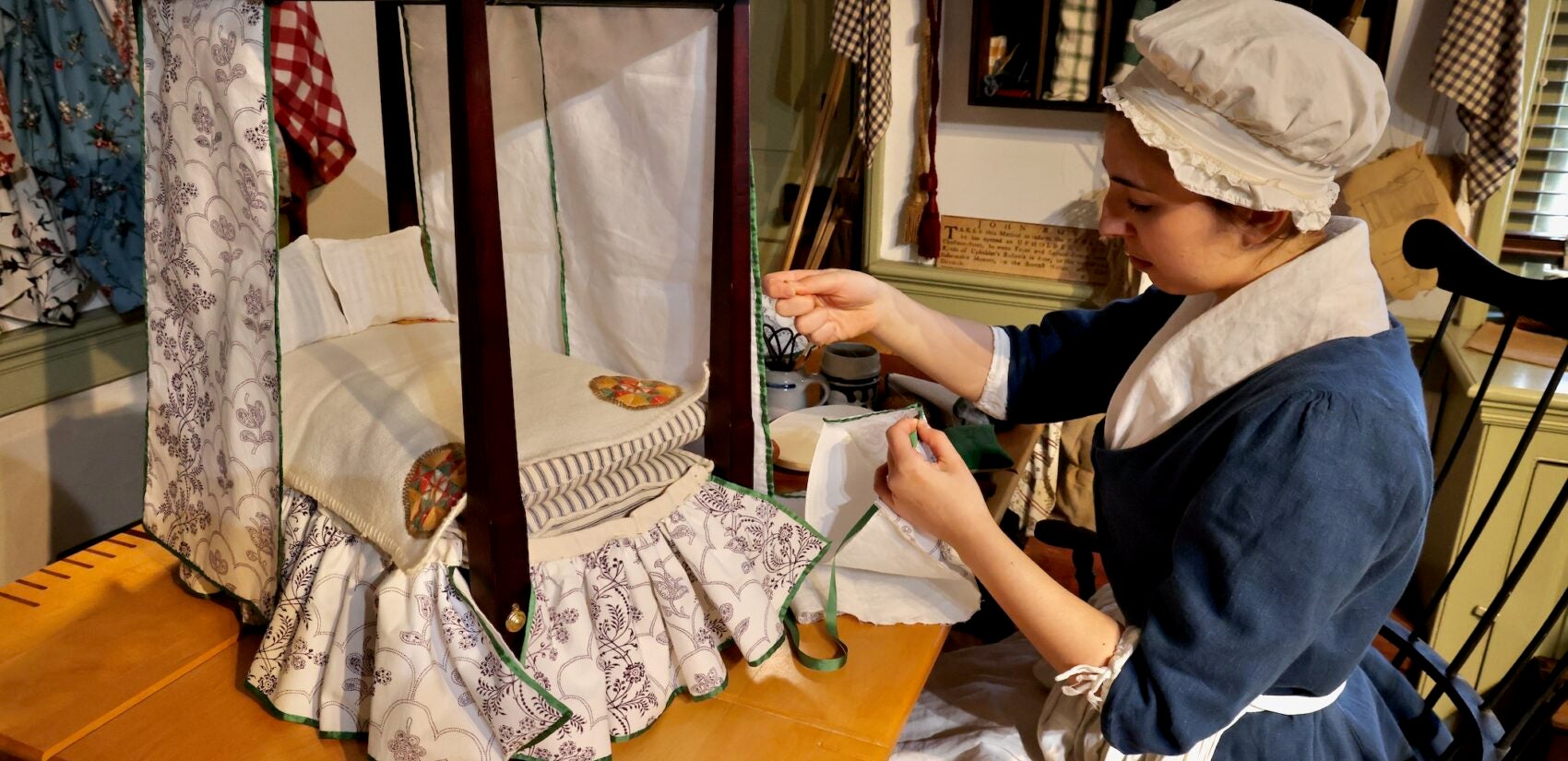
The sewing project was launched to mark the 250th anniversary of Ross’ work for Washington in 1774. Due to delays, work on the miniature bedding started in November 2024 and is expected to be finished in March 2025.
Visitors to the Betsy Ross House can watch the work being done by “The Betsys,” a rotating roster of four Betsy Ross actors hand-stitching the bedclothes.
Progress can sometimes be slow. Part of being a Betsy is to give full attention to visitors whenever they have questions.
“They’re always really shocked that it’s all by hand,” said Nina Gold, a Betsy. “There tends to be a really high level of interest in what it was like to be a woman at the time, specifically a woman in business, which is super cool.”
The business success of the real Betsy Ross supports the theory that she could have made the first Stars and Stripes. Ross and her husband’s upholstery shop quickly attracted the attention of Philadelphia’s high society. They opened their shop in 1773 and within the first year they were taking orders from people like Benjamin Franklin and Benjamin Chew.
The historic record shows that Chew commissioned the Ross’ to dress his daughter’s home on Sept. 20, 1774, then had dinner with George Washington on Sept. 22. He likely recommended the Ross’ to Washington, who commissioned them the next day.
“It sets a precedent for the Washington’s being clients of Betsy and John Ross prior to the creation of the flag,” Pulley said. “Even though they were not local to Philadelphia, they clearly had a pre-existing knowledge with the Rosses and their work.”
Although not a certainty, Pulley believes what the Betsy’s are stitching together leans toward the origin of the first national flag.
“We do have a receipt for the second flag that she made for Washington, from about a year later in 1777, and we know from oral history that she contributed to the design of that flag,” she said. “So, as far as we can tell, the evidence all points to it.”

Saturdays just got more interesting.
WHYY is your source for fact-based, in-depth journalism and information. As a nonprofit organization, we rely on financial support from readers like you. Please give today.

